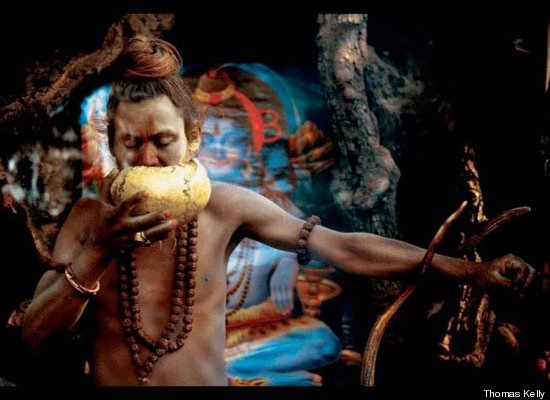
On a completely empty CTA train.
- Posted using BlogPress from my iPhone
"When you begin to question your dream, awakening will not be far away." -Sri Nisargadatta Maharaj
Souljourns - Amma - The Hugging Saint - Mata Amritanandamayi - Ted Henry from Ted Henry & Jody Cleary on Vimeo.

The Rubin Museum of Art has the largest Western collection of religious art from cultures of the Himalayan mountain range, including those of Nepal, Tibet, and Bhutan as well as the interrelated traditions of India, Mongolia, and China.

A spectacular shrine room on loan from the Alice S. Kandell Collection allows visitors an extraordinary opportunity to experience Tibetan Buddhist art in context. Containing approximately 170 works of art created between the 13th and 19th centuries from the Tibetan Plateau, China, and Mongolia, the shrine room highlights the religious context in which these sacred objects would be found in a private Tibetan shrine.
All of the objects - thangkas as well as sculptures of buddhas, bodhisattvas, tantric deities, female deities, wrathful deities and teachers - are arranged on traditional Tibetan furniture and according to the hierarchy they assume in Tibetan Buddhist practices. Ritual objects, such as butter lamps, offering bowls, vajras and bells, rosaries, conch trumpets, horns and reeds, and hand drums, are also on view.


Aghori, 2000
Pashupatinath, Kathmandu, Nepal
The Aghori sub-sect of Shaivas closely resembles one of the earliest organized groups of Hindu ascetics, the Kapalikas, or "bearers of skulls," who originated
in the ninth or 10th century. Like the modern-day Aghori, Kapalikas worshipped the terrifying manifestation of Shiva, Bhairava, and were known to perform human sacrifice, which often involved offering their own flesh to the deity in acts of self-mutilation and even ritual suicide. Though these extreme practices have evolved into symbolic acts today, the Aghori still use human skulls in rituals, as seen in this photograph. Drinking out of a skullcup (kapala) is a magical act in which the sadhu partakes of the deceased's life force, controlling it with the use of mantras. The skull also serves as a constant reminder of human mortality and the necessity of conquering the duality of life and death.
Because of their taboo behavior, Aghori ascetics remain on the furthest fringes of Hindu society. They drink alcohol, eat meat and use obscene language, transgressions that defy conventional Hindu rules of purity and pollution. Through ritual activities that deliberately combine behavior considered sacred and profane in the Hindu tradition, the Aghori seek to see all things as one, especially opposites.

Kukkuta Asana, 2010
Pashupatinath, Kathmandu, Nepal
Aside from a life of simplicity and religious focus, many sadhus engage in a diverse array of practices, both internal and external, in order to attain higher states of awareness and consciousness. This sadhu has chosen Hatha yoga and shows off the results -- a well-disciplined, strong body -- by holding the kukkuta asana, or "cock pose." Although Hatha yoga is partially physical in nature, there are many internal, mental practices that accompany the outer, physical postures. Through the united control of body and mind, the sadhu prepares for deeper, more advanced meditation.
Hatha yoga also helps the ascetic with sexual discipline and sublimation. Through yogic techniques that manipulate and control the body's physical processes and energetic principles, a sadhu's semen may be retained and converted into shakti, the divine female power that is the basis of all creation.









